Essential Equipment for Optimal Horse Care
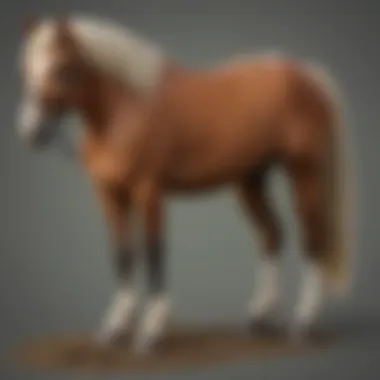
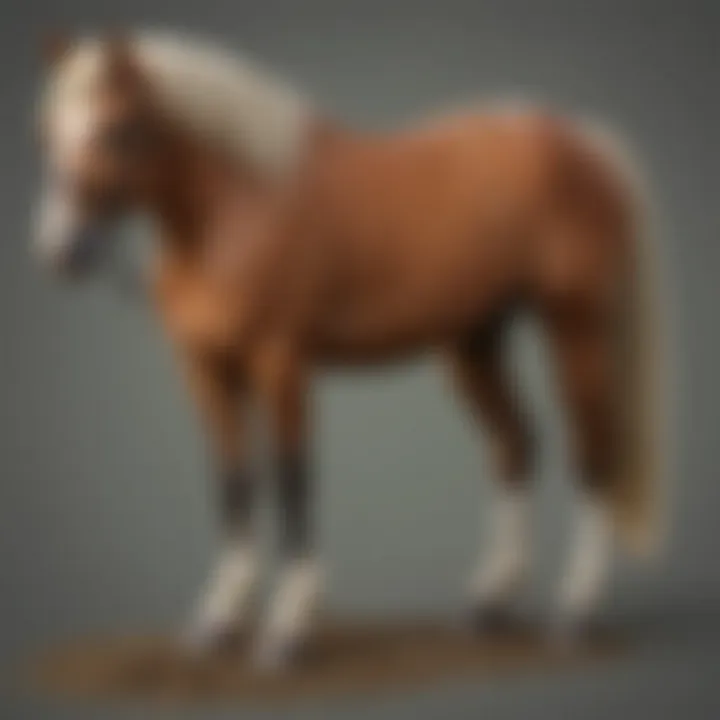
Intro
Effective horse care and management require a thorough understanding of essential equipment. Without proper tools and supplies, maintaining a horse's health and performance can become challenging. This article will detail the necessary equipment, including grooming tools, feeding supplies, health management items, and transportation needs. Each section will also evaluate the quality and functionality of these items to ensure they meet the standards required for optimal horse care.
Whether you are a seasoned equestrian or a newcomer to the world of horse ownership, knowing what equipment is essential will help you make informed decisions. Proper equipment not only enhances a horse's well-being but also aids in their performance in various activities.
By recognizing the relevance of each piece of equipment discussed in this article, readers will gain valuable insights into maintaining the health and happiness of their horses.
Feeding Supplies
Feeding supplies are critical in horse care and management because they directly affect the health and well-being of the animal. Proper nutrition is foundational for a horse's growth, energy levels, and overall performance. Focusing on feeding supplies includes understanding different types of feed, the right equipment to ensure feeding efficiency, and best practices to maintain the horse's diet.
Types of Feed
Grains
Grains are an essential part of many horse diets, providing concentrated sources of energy. They are often high in carbohydrates which are necessary for horses that require additional energy for activities. Oats and barley are popular grain choices due to their digestibility. However, grains can also present potential drawbacks; if not fed correctly, they can lead to issues such as obesity or metabolic disorders. It is important for horse owners to balance grain intake with other dietary components.
Hay
Hay serves as the primary forage for horses, delivering vital nutrients and fiber necessary for digestion. There are various types of hay, including timothy and alfalfa, each offering different nutrient profiles. One key characteristic of hay is its fiber content, which promotes healthy gut function. Nonetheless, hay quality can vary based on how it is harvested and stored. Poor quality hay can lead to respiratory issues and digestive problems. Therefore, selecting high-quality hay is essential.
Supplements
Supplements can play a valuable role in addressing nutritional gaps in a horse's diet. Common supplements include vitamins, minerals, and probiotics that support immune function and promote healthy joints. They are especially beneficial for horses that have special dietary needs or are undergoing intense training. However, it’s crucial to use supplements judiciously, as over-supplementation may cause toxicity or imbalance in the diet.
Feeding Equipment
Feeders
Feeders are important for maintaining clean eating environments and preventing feed waste. There are different styles of feeders available such as hay nets and mangers, each catering to one specific feeding need. The raised position of some feeders allows horses to eat comfortably while reducing strain on their necks. Nonetheless, improper feeder design can cause injuries or lead to aggressive feeding behavior among horses. Hence, selecting the appropriate feeder requires consideration of horse temperament and eating habits.
Water Troughs
Proper hydration is equally important as nutrition, making water troughs a necessary piece of equipment. They should provide a constant supply of clean water, as horses consume a significant amount daily. Automatic waterers are practical options for their convenience. However, they require regular maintenance to ensure cleanliness. If the trough is too deep or the water is not refreshed, horses may avoid drinking, risking dehydration.
Storage Containers
Storing feed properly prevents spoilage and protects against pests. Plastic bins or metal containers are suitable for maintaining the quality of grains and supplements. One advantage of sealed storage is that it keeps contents safe from contamination. However, it is crucial to label containers clearly to avoid feeding mistakes. Regularly checking the contents for mold or pests ensures only fresh food is offered to horses.
Feeding Practices
Regular Schedules
Establishing a regular feeding schedule is beneficial for horses, as it creates routine and stability. Horses thrive on predictability, which helps in reducing anxiety and stress. Feeding at the same times daily supports digestive health and promotes a balanced metabolism. Moreover, it allows for easier monitoring of your horse's appetite and overall condition. A downside of lack of a schedule is possible over-feeding or under-feeding due to fluctuations in daily routine.
Portion Control
Portion control is critical in managing a horse's weight and overall health. It involves providing the right amount of feed based on the horse's size, activity level, and age. Using measuring tools can ensure that portions are consistent. Overfeeding can lead to health issues such as laminitis, while underfeeding may result in a lack of energy and weight loss. Monitoring a horse's condition regularly can help in adjusting portions as necessary.
Grooming Tools
Grooming tools play an essential role in maintaining the health and appearance of horses. Proper grooming promotes a healthy coat, aids in detecting any skin issues, and fosters a bond between the horse and its handler. Each tool serves a specific purpose and contributes to the overall well-being of the animal. Understanding the different grooming tools can help owners provide better care.
Basic Grooming Equipment
Brushes
Brushes are fundamental in any grooming kit. They help remove dirt, dust, and loose hair from the horse's coat. The key characteristic of brushes is their bristle type, which can vary from soft to stiff. A soft brush is gentle on the skin and ideal for sensitive areas, while a stiff brush can effectively remove more debris.
A unique feature of brushes is the combination of bristle types in some models. This versatility allows for efficient grooming without needing several separate tools. While brushes are beneficial for maintaining a clean coat, owners must be wary of over-brushing, which can lead to skin irritation if done excessively.
Combs
Combs are another important tool for horse grooming. They are used primarily for detangling and smoothing the mane and tail. The key characteristic of combs is their spacing; wider teeth can tackle thick, tangled hair, while finer teeth help smooth out any remaining knots.
A notable advantage of using a comb is its ability to reach areas that brushes might miss, particularly in longer manes. However, combing requires some caution; excessive force can lead to breakage of hair strands, creating damage instead of repair. Therefore, a gentle approach is advisable when using combs on horses.
Sponges
Sponges are often overlooked, yet they have specific roles in horse grooming. They are typically used for general cleaning, especially around the face and sensitive areas, as well as bathing the horse. The characteristic of sponges that makes them beneficial is their absorbency, which effectively cleans without scratching the skin.
One unique feature of sponges is their ability to hold water and/or diluted shampoo, which can be useful during grooming sessions. However, it is important to replace sponges regularly, as they can harbor bacteria if not cleaned properly. Regularly checking for wear and tear can ensure they remain safe for use.
Specialized Grooming Tools
Hoof Picks

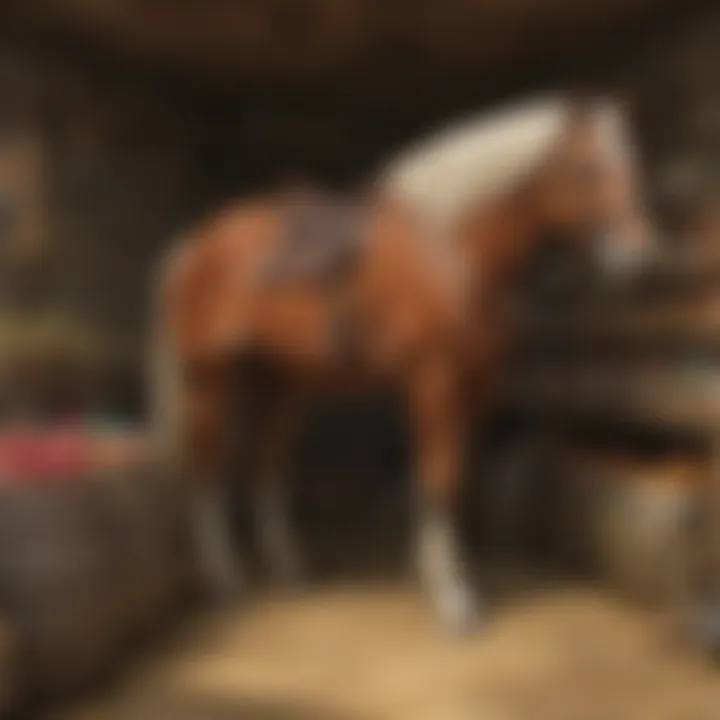
Hoof picks are a specialized tool critical for horse care. Keeping the hooves clean can prevent a host of issues, including thrush and other infections. The key characteristic of hoof picks is their pointed end, designed specifically to dislodge dirt from hard-to-reach areas.
A unique feature of some hoof picks is the presence of a brush on the opposite end. This addition allows for dual functionality, saving time and ensuring thorough cleaning. However, improper use can result in damage to the hoof if the pick goes too deep or is used with excessive force.
Clippers
Clippers are another specialized tool, often used for mane, tail, and body clipping. The key feature of grooming clippers is their motor strength, which dictates how efficiently they cut through hair. High-quality clippers provide a smooth and quick clipping experience.
Some models come with interchangeable blades, allowing for differing lengths and styles of cut. This feature provides versatility for the groomer. However, clippers generate heat during use, which can lead to discomfort for the horse if not managed appropriately. Regular breaks and checking the horse's comfort level are recommended during clipping sessions.
Hair Vacuum
A hair vacuum can be a valuable addition to grooming supplies. This tool aids in quickly removing loose hair and dirt from the horse's coat and surroundings. The key characteristic of hair vacuums is their suction power, which can vary by model. Stronger vacuums can handle larger amounts of hair efficiently.
A unique advantage of using a hair vacuum is its ability to reduce the mess involved in grooming. It allows for a cleaner environment and minimizes clean-up time. However, it can be noisy, which might cause anxiety in some horses. Introducing the vacuum slowly and ensuring positive reinforcement can help in acclimating the horse to its presence.
Grooming Techniques
Techniques for Different Coat Types
Understanding techniques for different coat types is vital for effective grooming. Horses with thick, coarse coats require different brushes and methods than those with fine or curly hair. The key characteristic lies in recognizing which tools and approaches work best for each coat type.
Using appropriate techniques can lead to a better grooming experience, resulting in a healthier coat. For example, when grooming a thick coat, using a rubber curry comb followed by a stiff-bristled brush may yield favorable results. However, owners must also be cautious as inappropriate tools can cause irritation or damage the coat.
Frequency of Grooming
The frequency of grooming is another essential aspect of horse care. Regular grooming helps maintain skin and coat health as well as improves the relationship between horse and handler. It is commonly recommended to groom horses at least a few times a week, but the exact frequency can depend on factors such as the horse's living situation and activity level.
One unique feature of regular grooming is that it can allow owners to detect issues early on, such as skin irritations or injuries. However, over-grooming can stress the horse, leading to weariness and resentment. Finding a balance that serves both owner and horse is crucial for maintaining overall well-being.
Health Management Supplies
Health management supplies are critical in ensuring the longevity and well-being of horses. These supplies serve to prevent illnesses, promote recovery, and support the overall health of these animals. They range from medications to first aid equipment, each contributing to the effective management of a horse's health.
Medications and Supplements
Vitamins
Vitamins play a vital role in maintaining a horse's health. They are essential for various bodily functions, including metabolism and immune response. Horses often require vitamins like A, D, E, and B complex to ensure they have energy and resilience against disease.
A key characteristic of vitamins is their ability to enhance bodily functions. For instance, Vitamin E is known for its antioxidant properties, which help in neutralizing free radicals in the body. This is a beneficial choice as it promotes healthier muscle function, especially in performance horses. However, one unique feature of vitamins is that they can be overly abundant, leading to toxicity if not administered properly. Thus, caution is necessary to ensure the correct dosages are provided.
Minerals
Minerals are another essential component of health management. They are crucial for bone development, muscle function, and overall metabolic processes in horses. Key minerals include calcium, phosphorus, and magnesium, which support structural integrity and vitality of bodily functions.
One of the defining aspects of minerals is their requirement in precise ratios. A balanced intake is crucial for avoiding deficiencies that can lead to serious health issues. The use of mineral supplements can prevent these deficiencies, making them a popular choice among horse owners. However, over-supplementation can lead to imbalances, showcasing the need for a well-thought-out health plan for each horse.
Antiparasitics
Antiparasitics are critical for managing and preventing parasitic infections that can compromise a horse’s health. Regular administration of antiparasitic treatments, such as ivermectin or fenbendazole, helps keep infestations under control.
These medications are known for their effectiveness in eliminating internal worms and external parasites. They are especially beneficial in maintaining a horse's health in a herd setting, where the spread of parasites can occur easily. One downside, however, is the potential development of resistance if antiparasitics are overused or improperly administered, necessitating careful management to ensure their continued effectiveness.
First Aid Equipment
Bandages
Bandages are essential in the management of injuries and wounds in horses. They provide support and protection, aiding in healing processes. The main role of bandages is to keep wounds clean and prevent further injury.
A crucial characteristic of bandages is their versatility; they can be used for different types of injuries, from minor cuts to significant trauma. They are popular among the horse care community for their effectiveness in providing immediate care. However, improper application can cause issues like constriction, which can lead to further complications.
Medications
Medications are indispensable for treating various health conditions in horses. They can range from anti-inflammatory drugs to pain relievers. The primary characteristic of medications is their targeted approach in treating specific ailments.
Their benefit lies in the controlled and regulated response they can elicit from a horse's body. For example, non-steroidal anti-inflammatory drugs (NSAIDs) can alleviate pain and inflammation effectively. Yet, medications always carry the risk of side effects, emphasizing the need for consultation with a veterinarian for safe use.
Thermometers
Thermometers are pivotal for monitoring a horse’s health. A horse's average body temperature is typically between 99°F to 101°F. Immediate temperature readings can indicate underlying health issues without the need for invasive procedures.
A key characteristic of thermometers is their simplicity and accessibility. Digital thermometers, in particular, offer quick results and ease of use. They are popular because they allow horse owners to check temperatures frequently, especially in sick horses. However, reliance on thermometer readings without comprehensive assessments may lead to missed diagnosis of underlying conditions.
Routine Care Supplies
Hoof Care Tools
Hoof care tools are crucial for maintaining a horse’s feet, which are vital for their overall health and mobility. Regular hoof care helps prevent lameness and other complications.
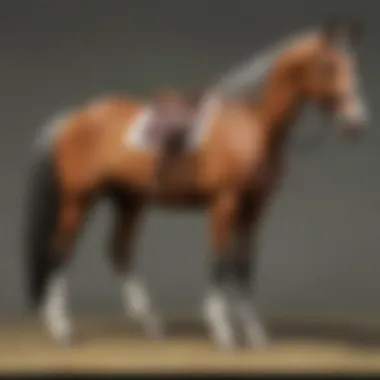
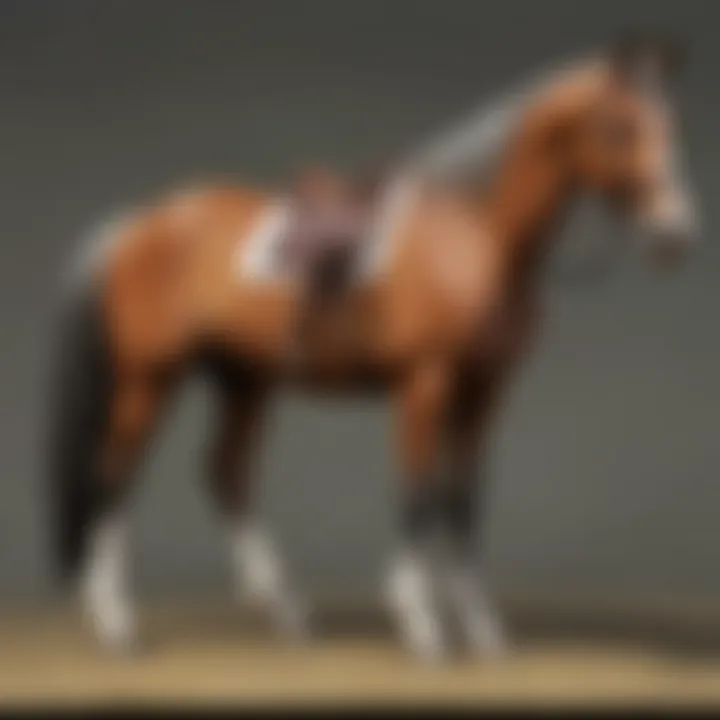
A standout characteristic of hoof care tools is their specialized design for different tasks. Tools like hoof picks, rasps, and nippers are tailored for specific care needs. They are frequently used, making them a popular choice among equestrians. Failure to use appropriate tools or techniques can lead to hoof injuries, hence understanding their proper use is essential.
Dental Care Equipment
Dental care equipment is necessary for the oral health of horses. Dental issues are common in horses and can lead to serious health complications if neglected. Regular dental check-ups can help prevent painful conditions.
One key aspect of dental care tools, such as floating tools, is their role in keeping a horse's teeth correctly aligned and functional. They are beneficial and highly recommended within the horse community, as good oral health is critical for effective digestion. A unique challenge is that not all horses might respond well to dental procedures, requiring careful handling and good techniques.
Tack and Equipment
Tack and equipment are crucial elements in the realm of horse care and management. They not only facilitate effective riding and training but also enhance the overall comfort and performance of the horse. Proper tack ensures a secure bond between horse and rider, while also promoting the horse's well-being. Investing in quality equipment leads to better training outcomes and an enriched experience for both the horse and rider. Each piece of tack must be chosen with care, as it can significantly impact the horse's movement, comfort, and performance.
Saddles
Different Types of Saddles
The selection of saddles is fundamental in ensuring the horse's comfort and performance. Common types include English saddles, Western saddles, and Endurance saddles. Each type has specific characteristics that cater to different riding styles and horse breeds.
- English saddles are designed for jumping or dressage. Their close contact design allows the rider to feel the horse’s movements, which is essential for precise responses.
- Western saddles offer more comfort for long rides and are popular in ranch work. The larger surface area distributes weight evenly, reducing pressure points.
- Endurance saddles aim to balance comfort for the horse and rider over long distances. They often feature lightweight materials and a design that permits freedom of movement.
The key advantage of having different saddle types is the ability to match equipment with specific activities. However, poor saddle fitting can lead to severe issues like back pain or discomfort in horses, emphasizing the importance of selection.
Fit and Comfort
Fit and comfort are critical in saddle selection. A well-fitted saddle allows for optimal performance while minimizing discomfort for the horse. The saddle should not pinch or restrict movement, and it must sit correctly on the horse's back.
Key features of fit include:
- Gullet Width: It should accommodate the horse's spine, providing enough clearance.
- Panel Shape: This affects how the weight is distributed across the horse's back.
- Tree Size: The tree's width should match the horse's shoulder width.
A disadvantage of improperly fitted saddles is increased risk of injury and behavioral issues in horses. Continuous pressure can lead to muscle atrophy or lameness. Therefore, using adjustable saddles can be beneficial to accommodate changes in the horse’s body over time.
Bridles and Bits
Types of Bridles
Bridles are essential for communication between rider and horse. The types of bridles include Snaffle bridles, Double bridles, and Hackamores. Each serves unique functions based on riding discipline and horse temperament.
- Snaffle bridles are commonly used in basic training due to their gentle action.
- Double bridles offer more control and are suited for advanced riding.
- Hackamores apply pressure on the nose instead of the mouth, which can be advantageous for gentle control.
The main characteristic of these bridles is their mechanism of communication. Choosing the right bridle enhances control and comfort. Nevertheless, improper use can lead to confusion and discomfort for the horse.
Choosing the Right Bit
Selecting the appropriate bit is crucial for effective communication. Bits come in various shapes and materials, including smooth, jointed, and gag bits. Each type can influence the way the horse responds to commands.
A significant aspect is understanding the horse's mouth structure, as each horse may respond differently to bits. For instance, a gentle snaffle bit can be a preferable starting choice for young horses, as it offers a softer approach to guidance.
Using the wrong bit can result in a lack of responsiveness or discomfort. Therefore, it is critical to regularly review and adjust equipment based on the horse’s behavior and training needs.
Other Tack Items
Blankets and Sheets
Blankets and sheets play a vital role in protecting horses from environmental elements. They come in various styles, including rain sheets, turnout blankets, and cooler sheets. Each type is designed for specific weather conditions and needs.
For example, rain sheets provide waterproof protection, while coolers are effective after exercise by wicking moisture away from the horse's body.
One advantage of blankets is their insulating properties, which help regulate the horse’s body temperature during harsh weather. However, they must fit properly, as loose gear can cause chafing or injuries.
Saddle Pads
Saddle pads serve as a necessary cushion between the saddle and the horse's back. They come in various materials, including memory foam, gel, or wool. Each material offers distinct benefits in shock absorption and comfort.
The key characteristic of saddle pads is their ability to protect the horse's back from pressure points and saddle movement. A well-fitted pad can improve the overall riding experience. However, using a poorly designed or inappropriate saddle pad can lead to saddle slipping and discomfort for the horse.
In summary, selecting the right tack and equipment is an essential aspect of horse care and management. Each piece plays a significant role in ensuring the horse's comfort and effective handling by the rider. Quality considerations, fit, and understanding the specific needs are crucial to maintaining a productive relationship between horse and rider.
Transportation Equipment
Transportation equipment is a critical aspect of horse care. It ensures that horses are moved safely and efficiently from one location to another. Whether for competitions, veterinary visits, or daily trips to the riding arena, having appropriate transport equipment is essential.
Horse Trailers
Types of Trailers
Different types of trailers accommodate various needs when transporting horses. Straight-load trailers allow the horse to face forward, while slant-load trailers offer a diagonal orientation that many horses prefer. Gooseneck trailers provide extra stability and space, making them a popular choice for long-distance trips. Each type has unique advantages, such as enhanced ventilation in slant-load designs, which aids in maintaining a comfortable environment for the horse.


Safety Features
The safety features of horse trailers are paramount to ensure the well-being of the transported horses. Features such as breakaway brakes and sturdy construction materials are vital. These features protect the horses during transit, significantly reducing the risk of accidents. Adjustable interior dividers contribute to safety by preventing horses from turning around during transport, which can lead to injuries.
Loading Equipment
Loading Ramps
Loading ramps are designed to facilitate the safe loading and unloading of horses into trailers. A secure and durable ramp is crucial for ensuring that horses do not slip or lose their footing. Non-slip surfaces enhance stability, which is a significant consideration for both horse and handler. This equipment is essential because it can prevent injuries during the boarding process, making it a beneficial aspect of horse transportation.
Halters and Lead Ropes
Halters and lead ropes play an indispensable role in managing horses during loading and transport. They provide control and guidance, helping to ensure that horses calmly enter and exit trailers. High-quality materials are important for safety and durability, and adjustable options can cater to different horse sizes. The ability to easily secure horses prevents accidents, emphasizing their importance in the transportation process.
Travel Supplies
Water Buckets
Water buckets are fundamental when transporting horses. They provide hydration during travel, which is essential for maintaining health. Sturdy and easy-to-clean designs are preferred, ensuring that water is always accessible. This equipment is vital because dehydration can become a serious concern on long trips, making water buckets necessary for any horse transport situation.
Travel Feed Containers
Travel feed containers are necessary for providing nutrition during transport. They are designed to securely hold feed without spilling. Sealed lids prevent contamination, ensuring that the feed remains fresh. This is particularly important during prolonged transit, where access to proper nutrition contributes to the horse's well-being.
In summation, the right transportation equipment is vital for the safety and care of horses. Choosing quality trailers, loading equipment, and travel supplies not only protects the horse but ensures a smooth and efficient journey.
Environmental Enrichment
Understanding environmental enrichment is crucial for optimal horse care and management. It involves creating an environment that encourages natural behaviors in horses, which greatly contributes to their overall well-being. Horses are intelligent animals that benefit from mental stimulation and physical activities as they can prevent boredom and related stress.
Stable Accessories
Stable Toys
Stable toys are designed specifically to engage horses both mentally and physically. These toys promote positive play behavior, which can reduce anxiety and destructive habits. A key characteristic of stable toys is their durability, as they must withstand the chewing and kicking of horses. An example is the Jolly Ball, which encourages pushing and interaction.
Moreover, stable toys also aid in keeping a horse occupied during long hours in a stall. However, care must be taken to ensure that the toy is safe and properly sized for the horse, avoiding any hazards that could lead to injury.
Feeding Enrichment
Feeding enrichment focuses on enhancing the horse's feeding experience. It involves using various techniques to make mealtime more engaging and satisfying. By providing forage in different ways, such as puzzle feeders or hay nets, horses can be encouraged to forage more naturally. This is beneficial since it mimics the behaviors they would exhibit in a wild setting.
Using slow feeders, for instance, can help regulate the horse's eating speed, which is crucial for digestive health. However, it's important to select feeders that are appropriate for the specific type and size of grain or hay, as improper equipment can lead to frustration or injury.
Exercise Equipment
Round Pens
Round pens play a significant role in horse exercise and training. They offer a defined space that allows for effective communication between horse and handler. The design of a round pen facilitates better movement control, which is essential for developing a horse's agility and responsiveness.
One notable advantage is their versatility; they can be used for lunging, groundwork, or training specific skills. However, the size of the round pen must be considered to ensure it is appropriate for the type of training being conducted.
Cross-Ties
Cross-ties are another important piece of equipment that provides a secure way to tie a horse for grooming or tacking. The primary characteristic of cross-ties is that they allow for movement while keeping the horse stable and secure. This safety feature is essential during grooming and other activities as it reduces the risk of accidents.
It is also valuable in teaching horses to stand still, which is a necessary skill for competitions or veterinary care. Nevertheless, care must be taken to introduce cross-ties gradually to avoid any panic or distress in horses unfamiliar with the setup.
Choosing Quality Equipment
Choosing quality equpiment is paramount for effective horse care and management. The right tools not only enhance the overall well-being of horses but also promote safety and efficiency in everyday tasks. High-quality equipment can withstand the rigors of frequent use, ensuring a longer lifespan and less frequent need for replacement. Understanding how to evaluate materials and size options is crucial in making well-informed decisions.
Evaluating Materials
Durability
Durability refers to the ability of a product to endure wear, pressure, or damage. In the context of horse care, durable equipment means less replacement due to wear and tear. This is essential because purchasing frequent replacements can become costly over time. Key characteristics of durability include resistance to environmental factors such as moisture and temperature changes. Durable items are a beneficial choice for horse owners who prioritize long-term investments. For example, high-quality rubber or metal feed containers tend to last longer than plastic options, which can crack or degrade. Thus, durability is a significant consideration that contributes to maintaining a sustainable horse care routine.
Safety Standards
Safety standards are established guidelines that ensure products are safe for use. In horse management, equipment that adheres to safety standards helps prevent injury to both the horse and the handler. The primary characteristic of safety standards is consistent testing for compliance, thus ensuring quality and reliability. Items that meet these standards give peace of mind, knowing they have been assessed to minimize risks. For instance, safety-approved saddles are designed to avoid unwanted slipping or pressure points that could harm the horse. Incorporating safety standards into the selection process helps create a secure environment, supporting both the horse's health and the handler's confidence.
Sizing and Fit Considerations
Measurement Guidelines
Measurement guidelines are essential for ensuring the proper fit of equestrian equipment. Accurately measuring the horse is critical as ill-fitting gear can lead to physical discomfort or even injury. The key characteristic of these guidelines is the detailed instructions on how to assess a horse’s unique dimensions. This is beneficial in preventing potential health issues related to poorly fitting tack. For example, knowing how to measure a horse’s girth and shoulder height enables owners to select saddles that avoid pressure points. Properly followed measurement guidelines enhance effectiveness in care, contributing to the horse's overall comfort.
Adjustable Options
Adjustable options in equipment allow for customization according to a horse's changing needs. This adaptability is a crucial aspect due to the natural growth and variability in horses over time. High-quality adjustable gear can be more beneficial over a long time, as it reduces the need for frequent replacements. A unique feature of adjustable saddles, for instance, is their capacity to cater to various body shapes. While they provide flexibility in fit, one disadvantage can be the complexity in adjustments required. Understanding how to properly adjust equipment is essential to ensure comfort and functionality, thereby promoting a better training and riding experience.
"Investing in quality equipment sets up a foundation for reliable horse management, which directly correlates with the horse's health and performance."
This overview discusses critical considerations when selecting quality equipment for horse care. Proper evaluation of materials such as durability and safety, along with attention to sizing, supports the broader goal of enhancing both horse and handler experiences.







